School History: 1994-2014
Buzz Aldrin Elementary School opened its doors to students for the first time on September 8, 1994. Our first principal was Gina Ross.
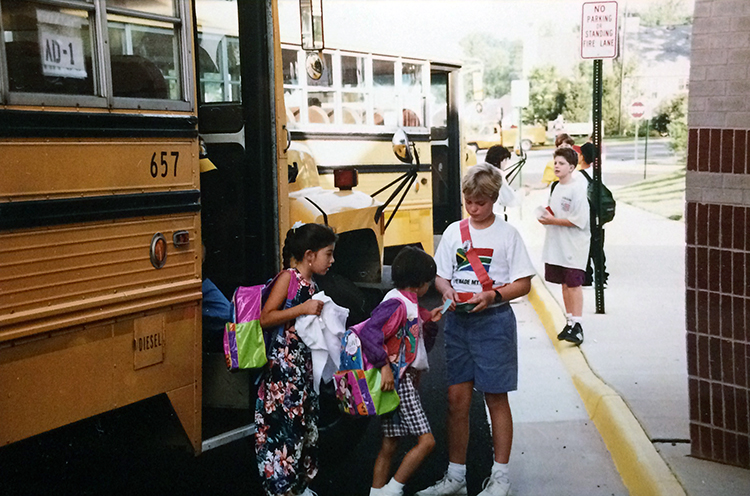
When Aldrin opened, it was the largest elementary school in Fairfax County in terms of square footage. We also had the largest gym of any elementary school in the county.
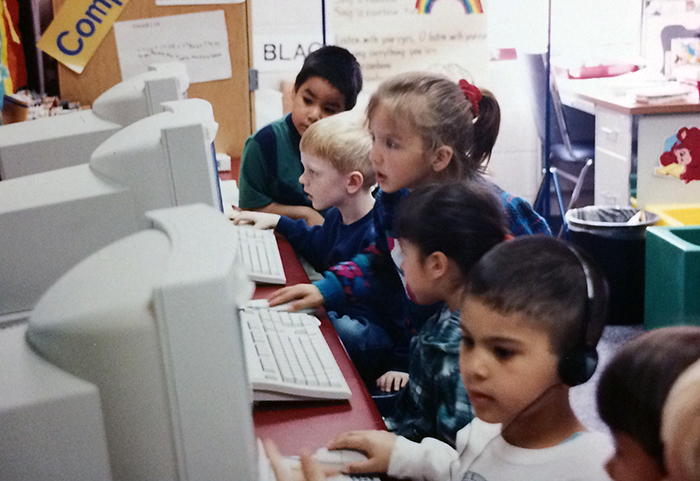
Other features unique to Aldrin were an occupational therapy room for students with special needs, two large teacher workrooms, and a science center with a weather station, science lab, and television studio. The area that housed the science center was originally designed as a separate wing for students with learning disabilities and physical disabilities, but students at Aldrin were never compartmentalized in this fashion. From day one, students with special needs were mainstreamed in general education classrooms. This forward-thinking practice allowed Principal Ross to build a science center to benefit all students. Within a few years, one of Aldrin's first business partners, The Challenger Center, would establish the first space simulator in an elementary school in our science center.
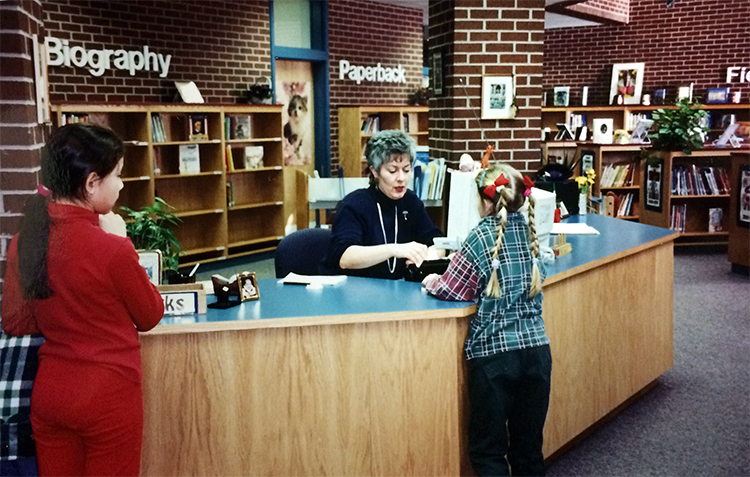
Each one of Aldrin's first teachers was hand-picked by Principal Ross, who received 500 resumes and interviewed some 300 candidates. She was looking for three distinct characteristics: 1) The teacher had to be willing to take an instructional risk, to approach a subject via a different avenue; 2) be flexible because "we will change gears many times in this process," and 3) be willing to laugh. Laughter, Ross said, is a necessary attribute for a teacher.
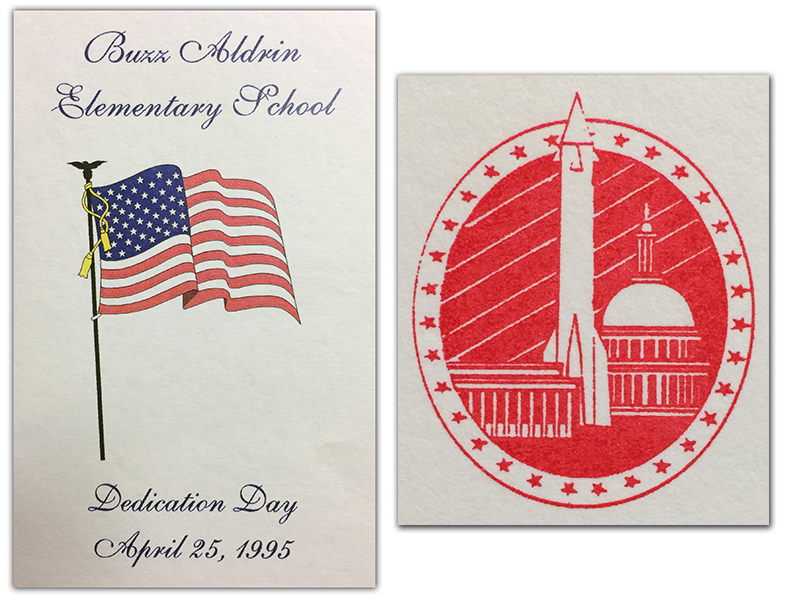
The Marsville Project
Aldrin Elementary School began its second year with 731 students, a major jump in enrollment from the previous year, necessitating the hiring of ten additional staff members. In April 1996, Aldrin Elementary School participated in the international Marsville Project sponsored by The Challenger Center. The two-day project was the culmination of a two-month long unit about space travel and life in space, and was designed to teach problem solving, critical thinking, and data analysis skills.
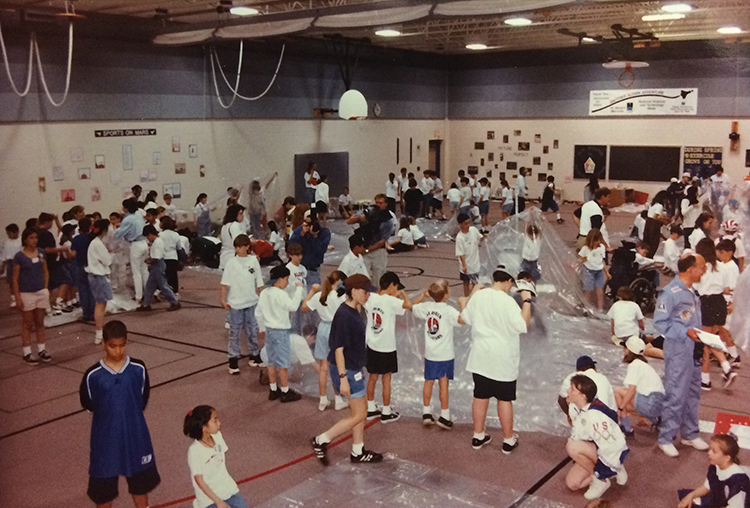
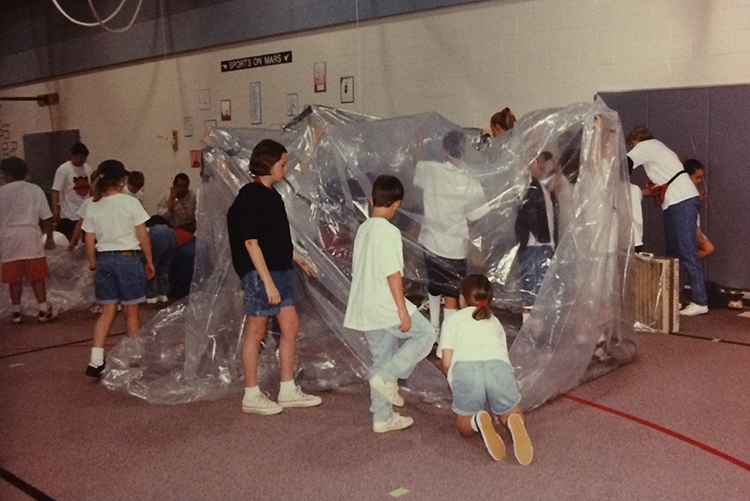
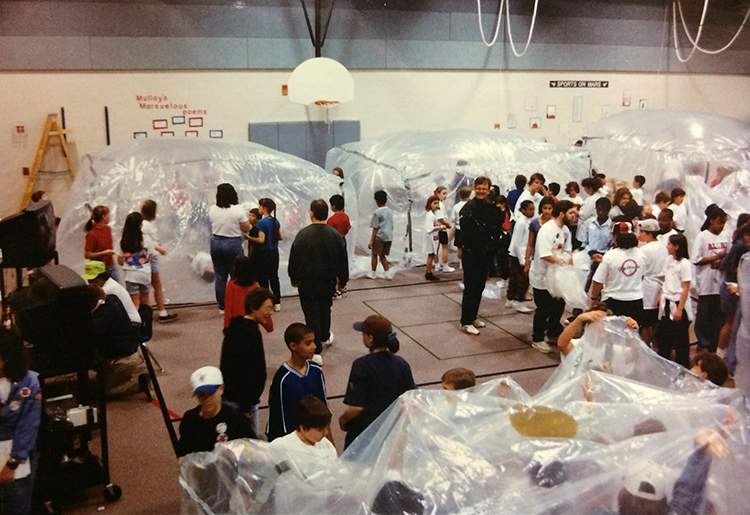
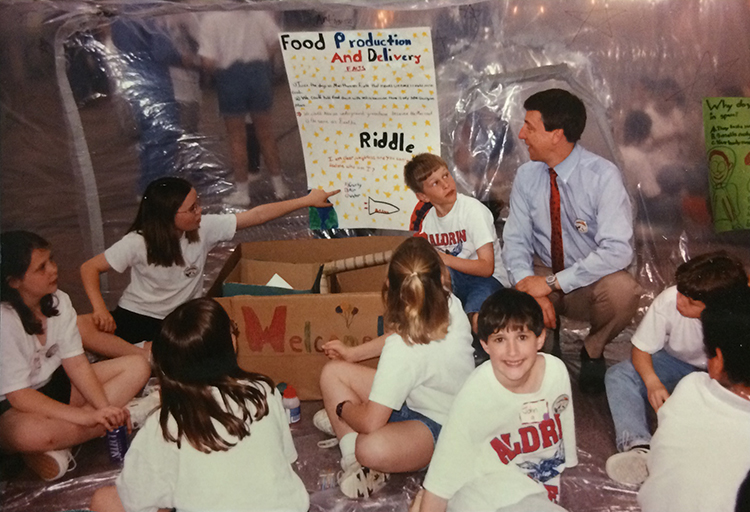
Assignment Earth
On April 17, 1997, Aldrin Elementary School held Mission to Planet Earth Exposition ’97. At the exposition, students demonstrated the effects of humidity on flora and fauna in a bubble dome, simulated a volcanic eruption with a model volcano, dehydrated foods with solar power, and raced hand-made sailboats by blowing on the sails. The event was created to help students understand the forms of and sources of energy, to reinforce and encourage energy conservation at home and in the community, and to gain a greater understanding of the human impact on the global environment.
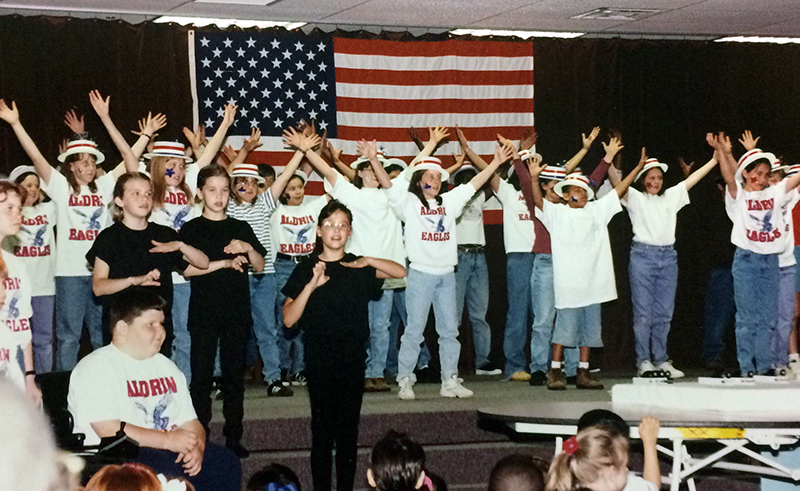
School Uniforms
In 1997, Aldrin Elementary School became one of several schools in Fairfax County to adopt a voluntary school uniform policy. Aldrin’s uniforms were selected by a committee of parents and students.
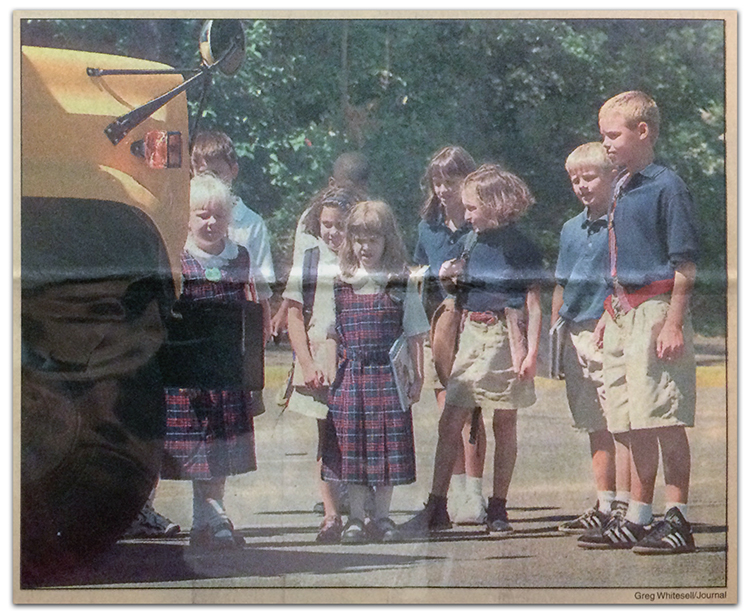
During the 1997-98 school year, about half of Aldrin's 750 students wore uniforms to school. Principal Ross was an enthusiastic proponent of the school uniform policy. "The uniforms give kids such a sense of belonging and pride, like they represent a team—something much bigger than themselves,” she told a reporter from The Journal newspaper. In August 1998, the Washington Post published a story about the school uniforms at Aldrin. Student Bradon Garten shared his thoughts about our school’s uniforms with the reporter:
I think my uniform makes me smarter, but it's harder to make friends when I wear it, because some people wear their uniform and some people don't. My mom and I have a deal. If I wear my uniform two days a week, then I can wear whatever I want the other three days. I like to wear my uniform on Mondays and Fridays, because those days feel shorter.
Reach for the Stars
On May 24, 1999, Buzz Aldrin Elementary School commemorated the 30th anniversary of the first lunar landing. Dr. Buzz Aldrin was in attendance, and students performed a musical in his honor.
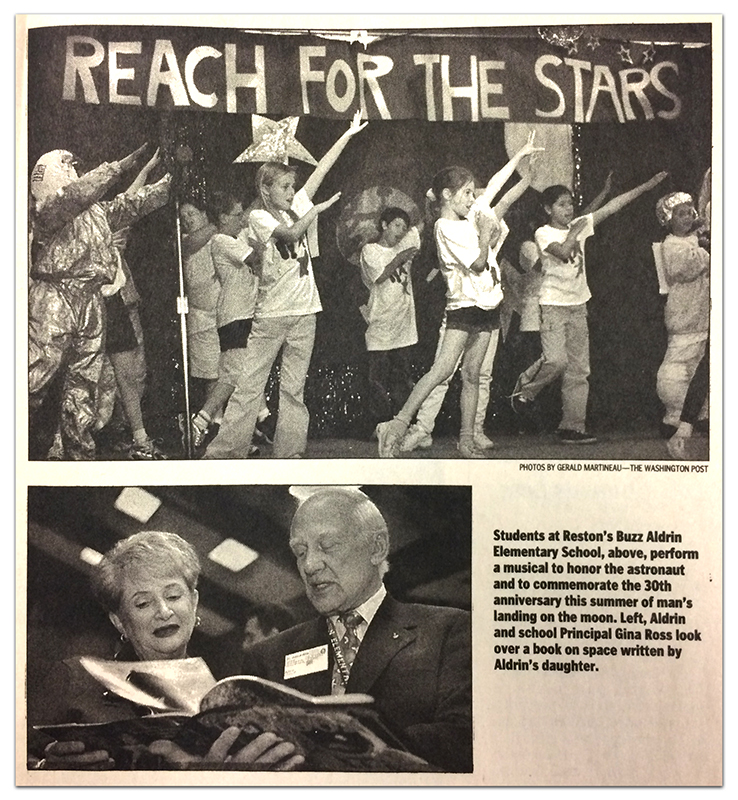
After the performance, students showed Dr. Aldrin the space capsules and decontamination rooms they had constructed out of cardboard, egg cartons, and aluminum foil. Second graders wore space helmets fashioned out of empty ice-cream tubs. "Those are some of the fanciest helmets I've ever seen," said Dr. Aldrin. During the commemoration assembly, Dr. Aldrin told students, "Think into the future. We need you to have a vision. I know that’s hard when you’re thinking about when’s recess, or what’s for lunch, or what's on TV tomorrow, but you need to start thinking about the next 10, 20, and 30 years. Make me and your parents proud of what you’re doing.”

Fun Fact
Did you know that in 1999, Aldrin Elementary School was recognized nationally by Sports Illustrated magazine for having one of the finest physical education programs in the United States?
New Leadership
In June 2003, Principal Gina Ross climbed a ladder up to the roof of our school and sat atop the building for a day. Principal Ross had done similar stunts before as an incentive to encourage students to read, but this would be the last such occurrence as the date of her retirement was rapidly approaching.
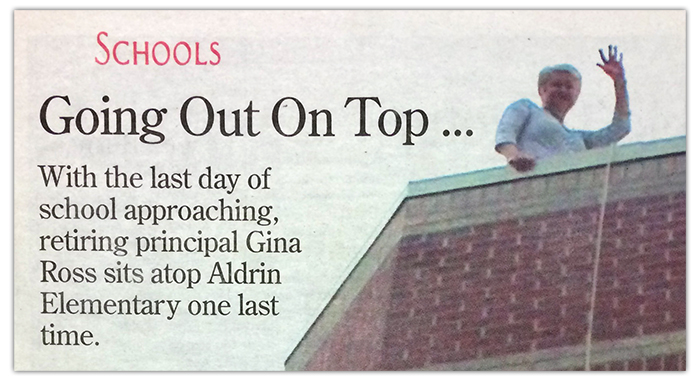
With the search for her successor underway, Principal Ross shared some words of advice for her as yet unnamed replacement: "Spoil the teachers. If you love the staff, they will love the child."
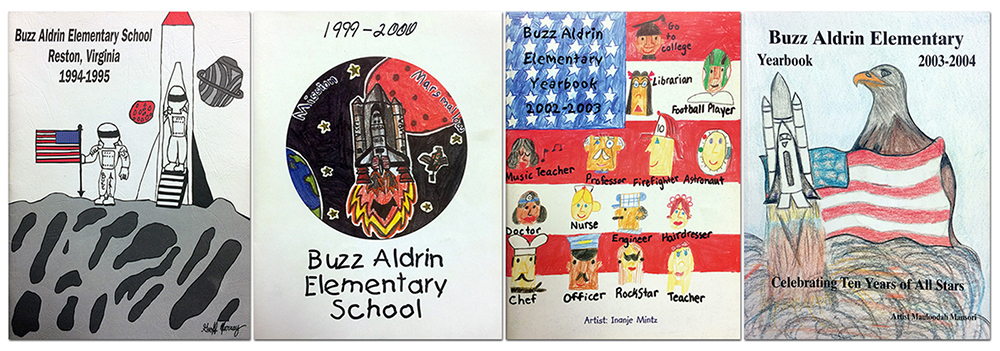
Marty Marinoff (2003-12)
In July 2003, Marty Marinoff was appointed the second principal of Aldrin Elementary School. Mr. Marinoff was an assistant principal at Aldrin from 2001-03, and had been an assistant principal at Great Falls Elementary School in 1990-91 when Gina Ross was principal of that school.

An Alexandria native, Mr. Marinoff began his teaching career in 1972 as a physical education teacher. He led Aldrin Elementary School for nine years until 2012, when he was succeeded by our current principal, Shane Wolfe.
Student Activities
Extracurricular and co-curricular activities and PTA-sponsored clubs have been a hallmark of the strong instructional program at Aldrin since our founding.
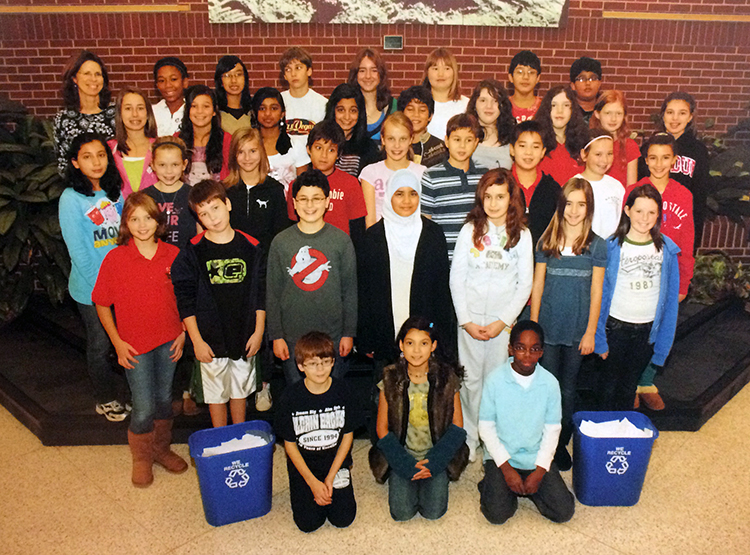
In addition to traditional offerings such as SCA, Safety Patrol, band, chorus, and strings, some popular clubs over the years were the Library Club, Student Mediators, the Meditation Group, and the Philosopher Club.
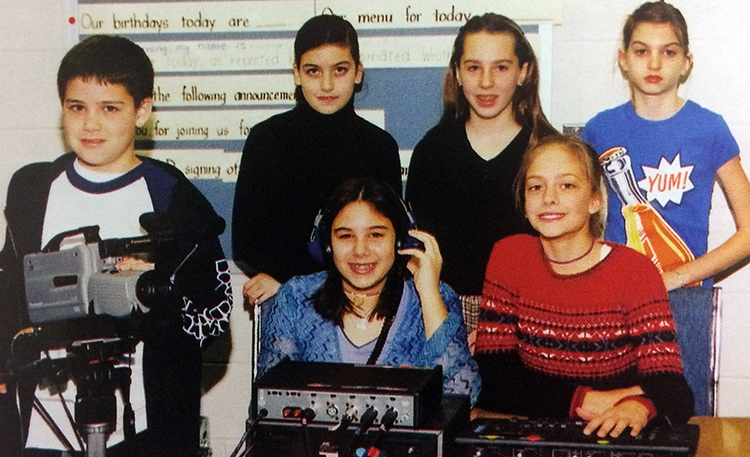
Founded in the 1990s, the Solar Flares Dance Team, All-Star Orff Ensemble, and Comets Stage Crew were special musical performance and service groups. The Solar Flares Dance Team was comprised of fifth and sixth grade students from the chorus who loved to dance. They wore neon vests, ties, hats, and gloves, and danced under blacklight so that their costumes would “glow or flare” as they moved. The All-Star Orff Ensemble was comprised of fifth and sixth grade students from the chorus who loved to play Orff instruments, such as xylophones, metallophones, and glockenspiels. The ensemble accompanied the Buzz Aldrin Chorus as well as played selected concert repertoire on their own. The Comets Stage Crew was comprised of fifth and sixth grade students who liked working behind the scenes. They operated the technical equipment, stage lighting, and set up props and scenery for all the musicals, concerts, and special events that occurred at Buzz Aldrin Elementary School.

A Look Back
Take a moment to look back at some events in Aldrin’s history. The video topics include a visit by meteorologist Bob Ryan, an in-depth look at our Strategies Lab, the third-grade wax museum in 2009, and the Crayon Factory in 2008.


